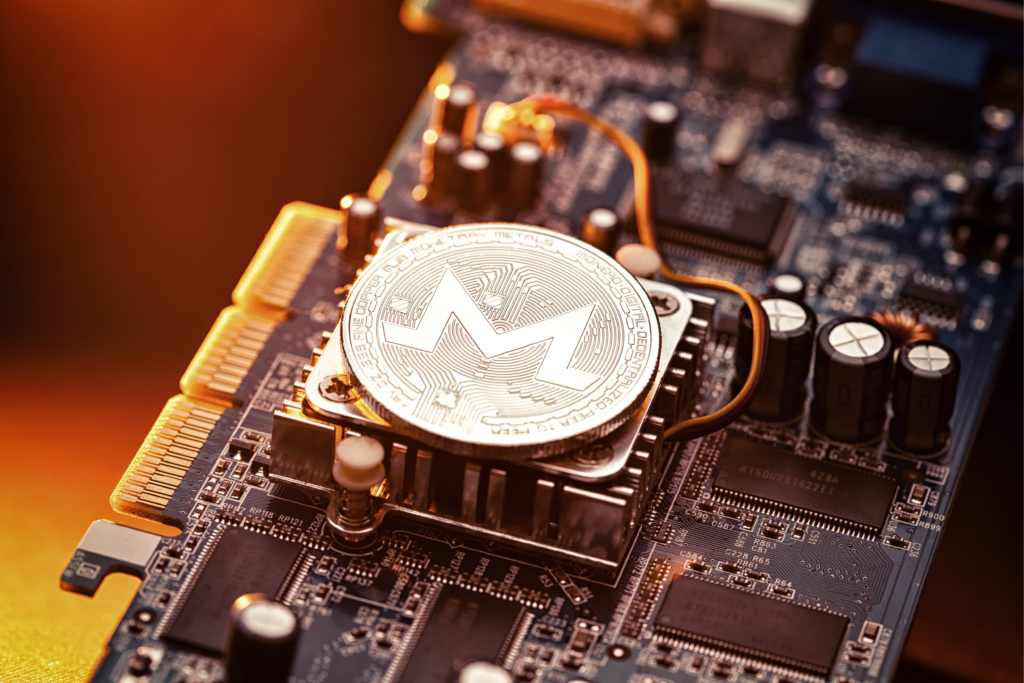Monero recently performed a hardfork to prevent the coin from being mined on ASIC devices.
While many cryptocurrency protocols, including Bitcoin (BTC), embraced the idea of powerful dedicated devices used for the single purpose of mining coins, some projects sensed the threat to their economic models. The team behind the privacy-focused coin Monero (XMR) believes that ASIC miners may destroy their decentralization and make the network vulnerable to 51 percent attacks.
On March 9, Monero completed a routine hardfork with the primary aim to improve the protocol to be more ASIC-resistant. The fork was implemented on block #1788000 as scheduled and successfully purged miners that use ASIC machines from the network.
Apart from that, the team introduced a number of improvements deemed to enhance Monero privacy features and make the whole network more secure.

Monero’s Fight Against ASICs
In April 2018, Monero performed its first anti-ASIC hardfork to stop the coin from being mined on Bitmain’s Antminer X3. The new Bitmain manufactured mining rigs were designed to support cryptocurrencies based on the proof-of-work algorithm CryptoNight. The team of developers, headed by Riccardo Spagni, announced that they were against the Antminer X3 and performed the fork which gave birth to several additional coins like Monero Classic (XMC) and Monero Original (XMO). However, the fork’s effect proved to be short-lived. In February 2019 ASIC-miners were responsible for 85 percent of all Monero coins mined, according to the nonce analysis performed by a researcher known as MoneroCrusher.
Temporary Issues
According to the 2miners portal, the Monero network lost over 90 percent of its hash rate shortly after the hardfork. The parameters dropped to 96 Mh/s by Monday morning against 1.32 Gh/s registered on Saturday. However, other researchers provide different figures. Coinwarz service believes that the hash rate only dropped by 30 percent, while Bitinfocharts claims a 75 percent loss. Apart from that, Monero developers mentioned that it might take more time to discover new blocks, but the situation should stabilize within the next 24-48 hours. Usually, it takes about two minutes to discover a new block on the Monero network, however, at the time of writing it is exceeding the five-minute mark.Meanwhile, the XMR/USD reaction was rather muted as the coin continued consolidation with a downward moving bias. At the time of writing, XMR/USD is changing hands at $48.34. The price is moving within the rage of the previous days, mostly in sync with the broader market. Do you think Monero (XMR) will be able to stay ahead of the ASIC mining curve? Let us know your thoughts in the comments below! Editor’s Note (2019-02-13): This article originally misinterpreted a tweet by fluffypony regarding forking to stay ahead of ASICs. It has been amended.The scheduled protocol upgrade went successfully! 🎉
— Monero || #xmr (@monero) March 9, 2019
Top crypto projects in the US | April 2024
Trusted
Disclaimer
In adherence to the Trust Project guidelines, BeInCrypto is committed to unbiased, transparent reporting. This news article aims to provide accurate, timely information. However, readers are advised to verify facts independently and consult with a professional before making any decisions based on this content. Please note that our Terms and Conditions, Privacy Policy, and Disclaimers have been updated.

Tanya Chepkova
Tanya started as a financial news feed translator and worked as a financial analyst, news editor and content creator in various Russian and Foreign media outlets. She came to the cryptocurrency industry in 2016.
Tanya started as a financial news feed translator and worked as a financial analyst, news editor and content creator in various Russian and Foreign media outlets. She came to the cryptocurrency industry in 2016.
READ FULL BIO
Sponsored
Sponsored

